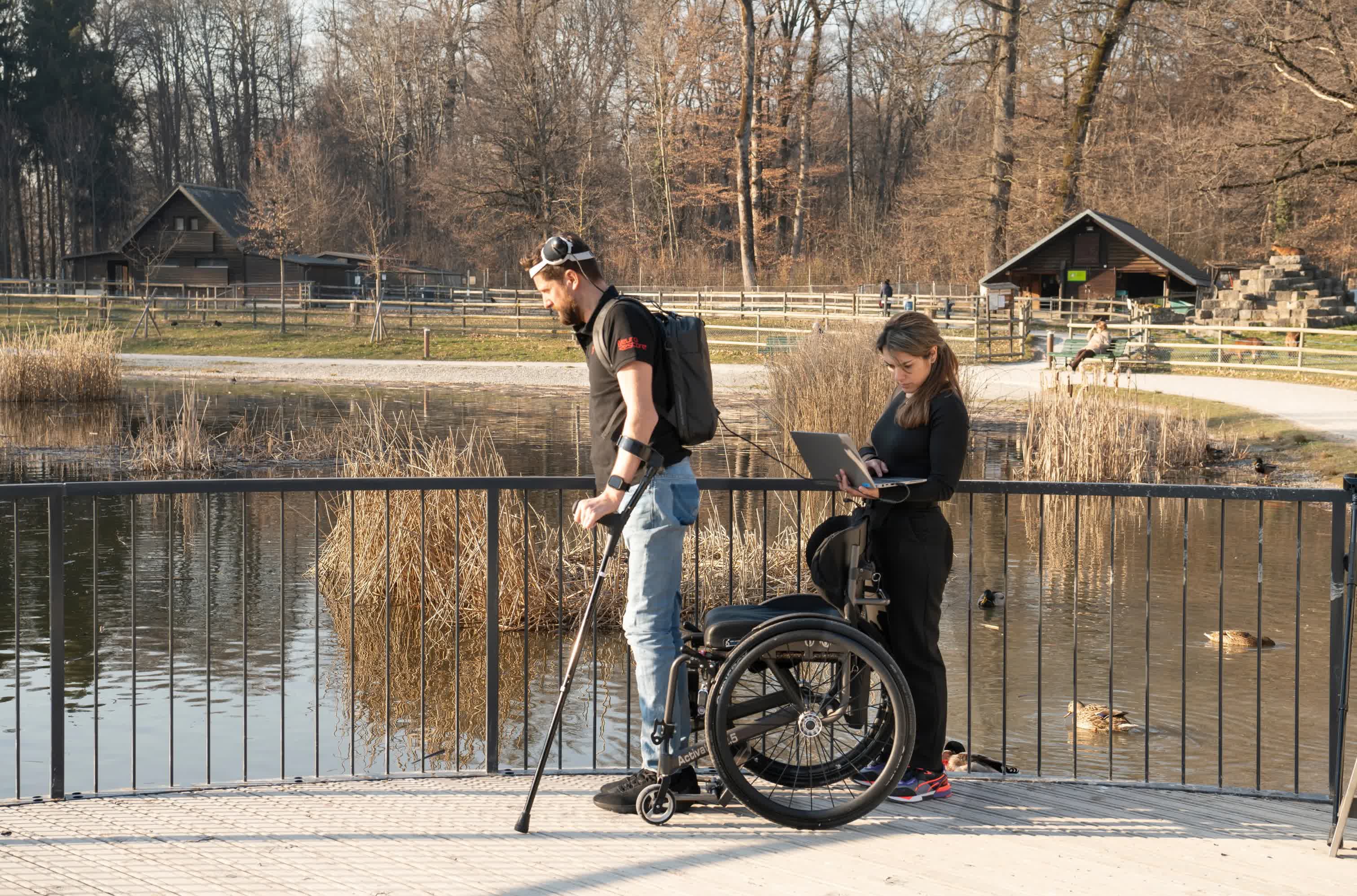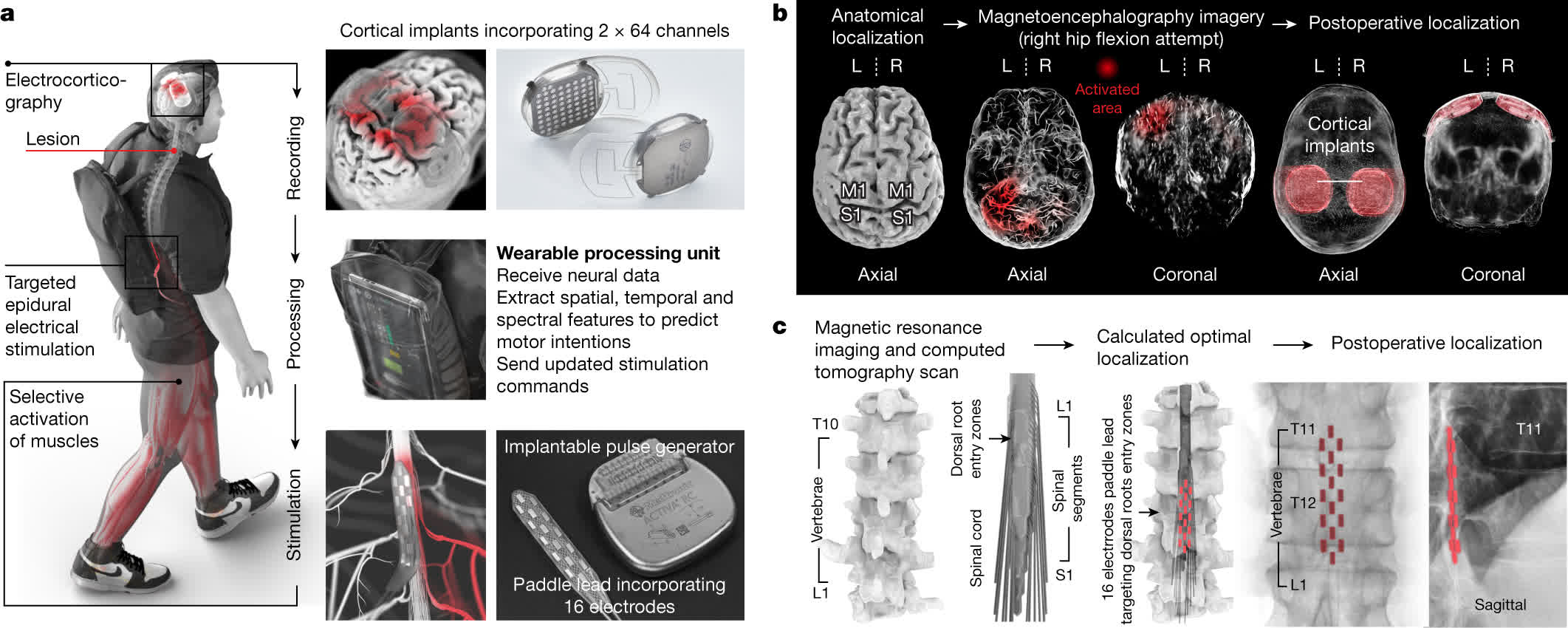Forward-looking: Computerized assistance has helped injured and disabled people regain the ability to move limbs in the past, but a new experiment has restored a broader range of mobility for one patient. After a brief period of calibration, a set of implants have enabled a paralyzed man to walk naturally with crutches while navigating complex terrain.

A spinal cord injury during a biking accident over a decade ago left Gert-Jan Oskam, 40, unable to walk due to limb impairment. An experimental neurorehabilitation program involving electronic stimulation restored basic mobility, but his overall recovery was limited. After three years of no further changes, a new trial involving a brain-spine interface (BSI) drastically improved his condition.
This setup uses a combination of hardware and software to create a wireless link between the brain and the spinal cord. The BSI changes brain activity into a type of electrical signal that can adjust how the leg muscles work. This can help people stand and walk again after becoming paralyzed due to a spinal cord injury.
Newly published research describes brain and spinal cord implants developed at the Swiss Federal Institute of Technology in Lausanne, which helped restore the damaged link between Oskam's brain and the rest of his body. The wirelessly connected apparatus includes electronic skull implants, a pulse generator attached to the spine, computer algorithms, and a processor carried in a backpack.
In initial tests, Oskam successfully controlled a virtual avatar on a screen with his brain. Soon after, he could control his hip muscles from a resting position after two minutes of calibration. Hip, knee, and ankle movement quickly followed.
The previous system Oskam tried allowed him to walk on flat surfaces with a roller, and only after engaging the system with movement-based stimulation. However, the BSI enables more natural walking with improved brain signal interpretation, requiring only a few minutes of calibration.
Click to enlarge
Oskam says he can now walk around 300 feet per day and independently complete a broader range of daily life tasks. He can walk up staircases and traverse sloped or uneven terrain with crutches. The system has remained stable after nearly a year of use.
The principle sounds similar to brain-computer interfaces that have previously shown promise for helping paralyzed people and amputees. Last year, a patient in Maryland cut and moved food toward his mouth for the first time in decades by remote-controlling robot arms with his brain. In 2020, researchers unveiled a nerve implant interface that let amputees use a special prosthetic without prior training.
Image credit: Gilles Weber, CHUV
https://www.techspot.com/news/98832-paralyzed-man-walks-again-after-brain-spinal-implants.html
